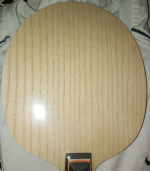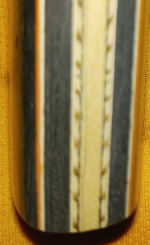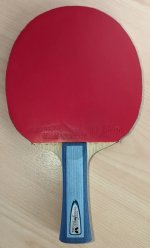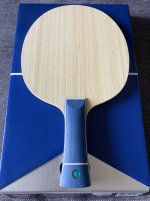This user has no status.
I'm currently experimenting with a new composition.
Already got my first prototype still working out the desired thickness as I'm not yet satisfied with some of the unwanted vibrations.
But it's basically an Ash outerply wood with innerlayer alc.
I'm fine with the composition and I know what direction I want to take in terms of some modifications/changes to the blade's thicknesses etc.
My question is what rubbers should I attach for testing purposes. Definitely I need to use H3 on the fh side but how about for the bh side?
Note:
Unfortunately I don't have a macro lens and couldn't get a clear shot of the composition.
Will upload more pics next time.
Already got my first prototype still working out the desired thickness as I'm not yet satisfied with some of the unwanted vibrations.
But it's basically an Ash outerply wood with innerlayer alc.
I'm fine with the composition and I know what direction I want to take in terms of some modifications/changes to the blade's thicknesses etc.
My question is what rubbers should I attach for testing purposes. Definitely I need to use H3 on the fh side but how about for the bh side?
Note:
Unfortunately I don't have a macro lens and couldn't get a clear shot of the composition.
Will upload more pics next time.















